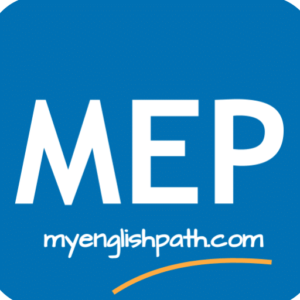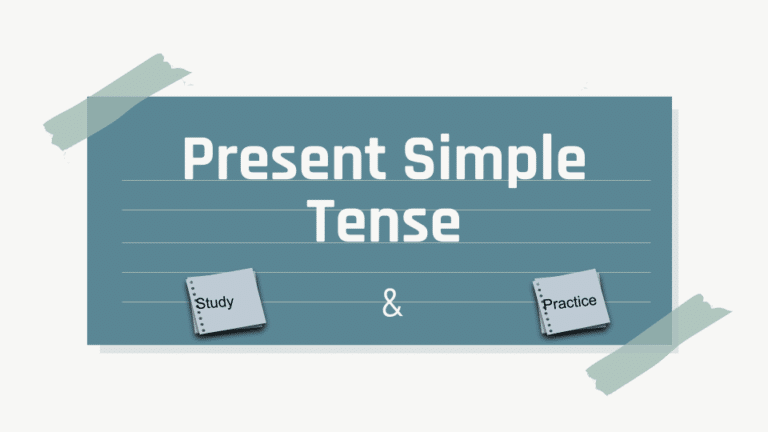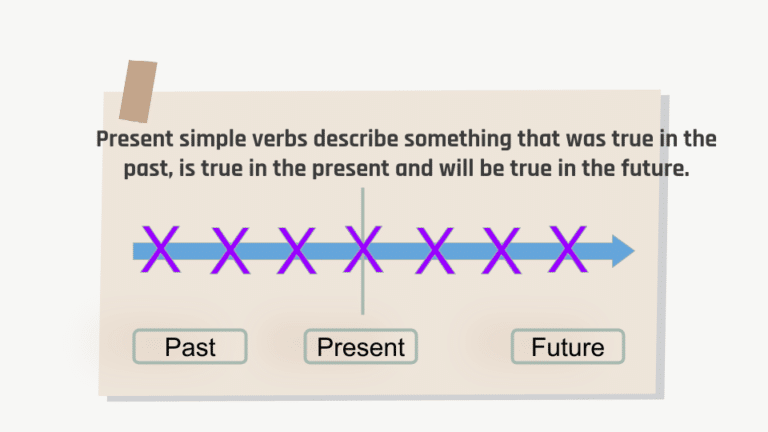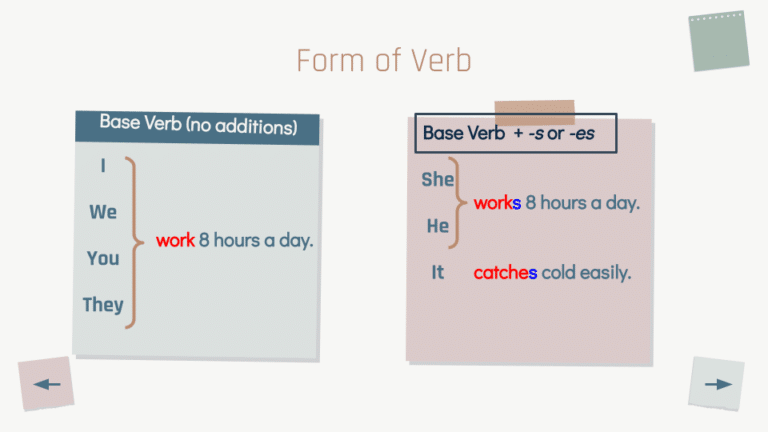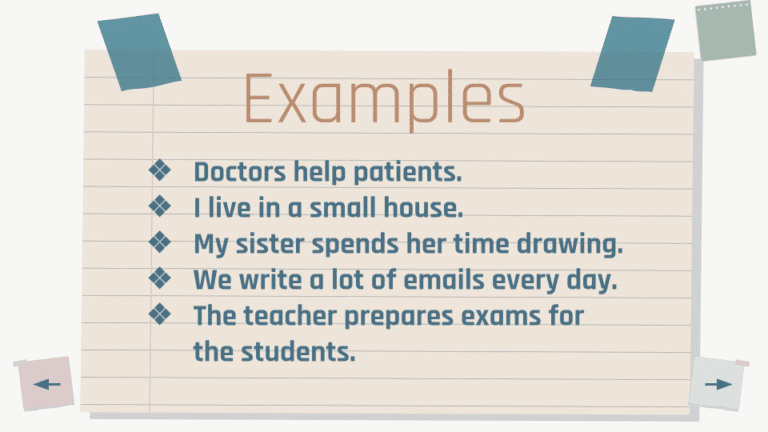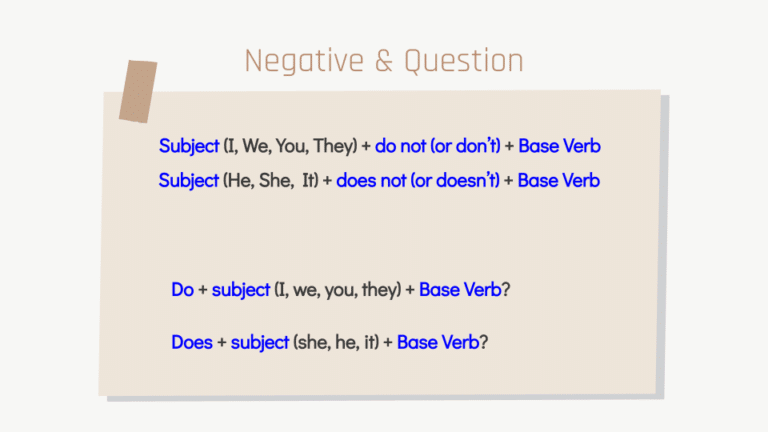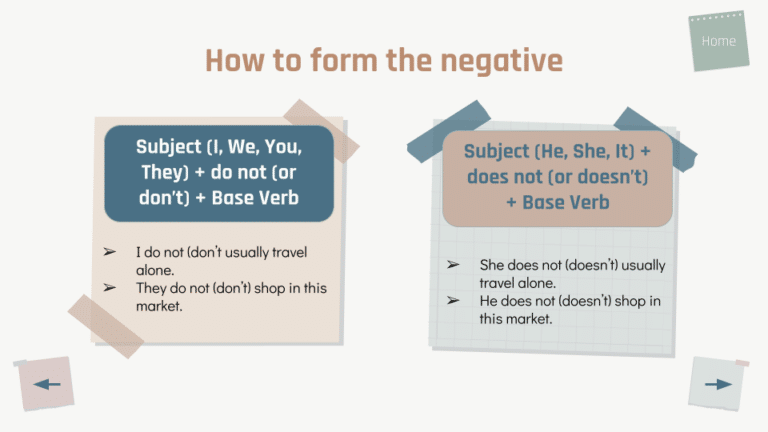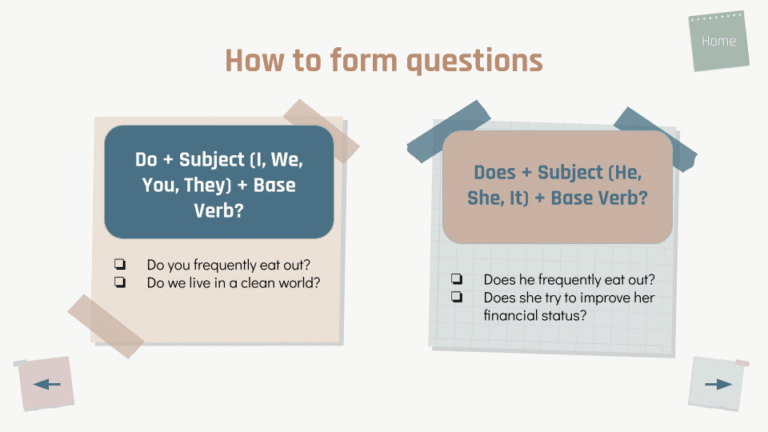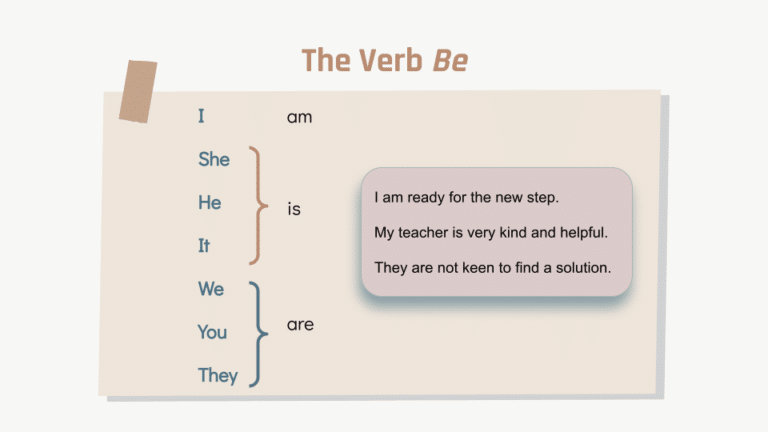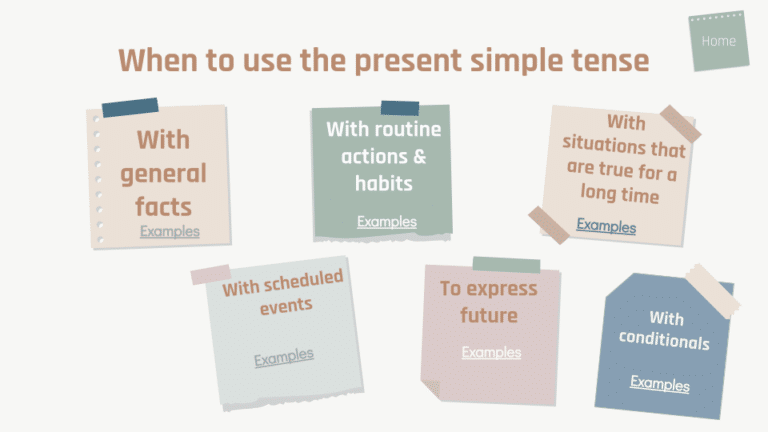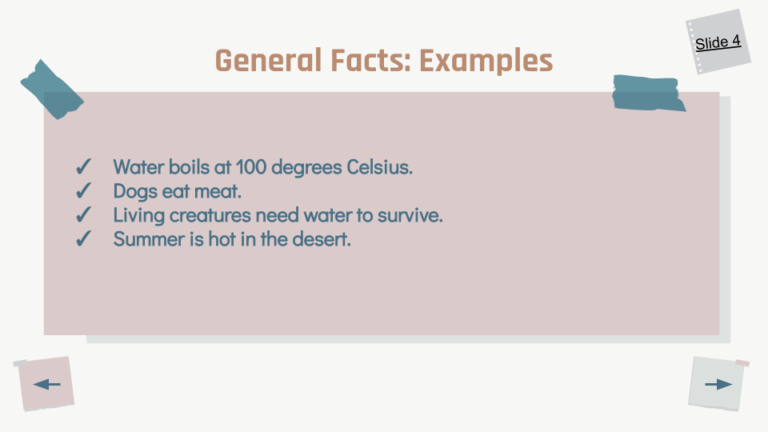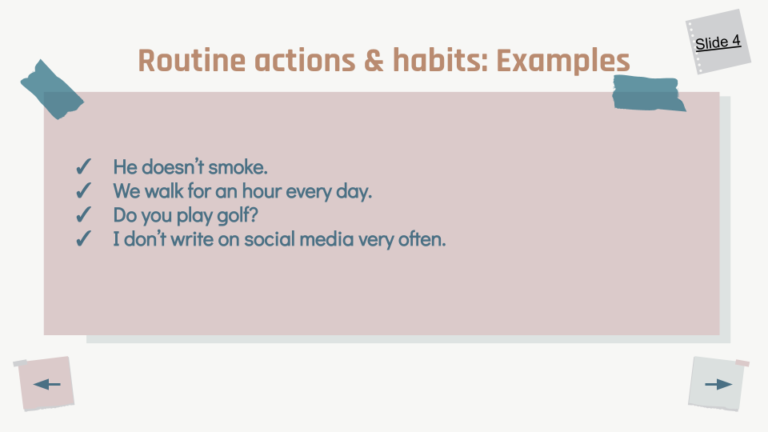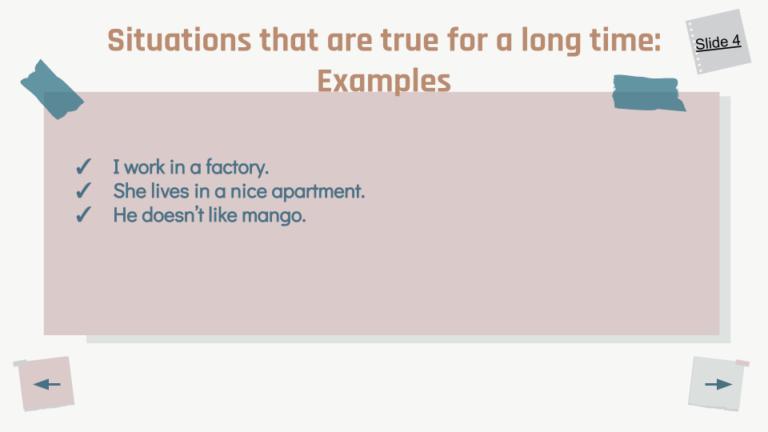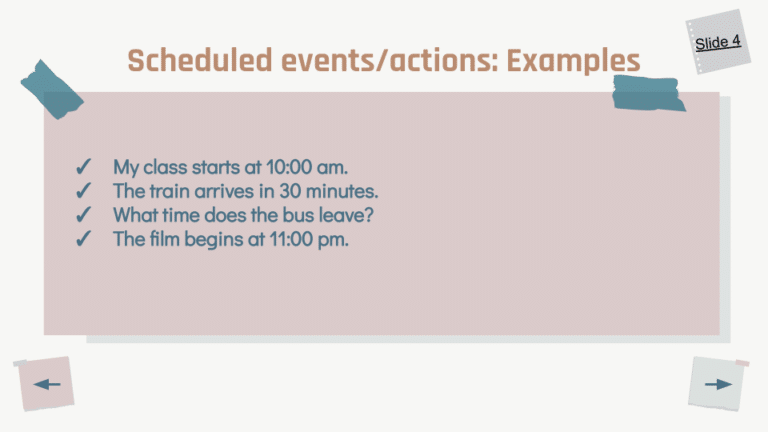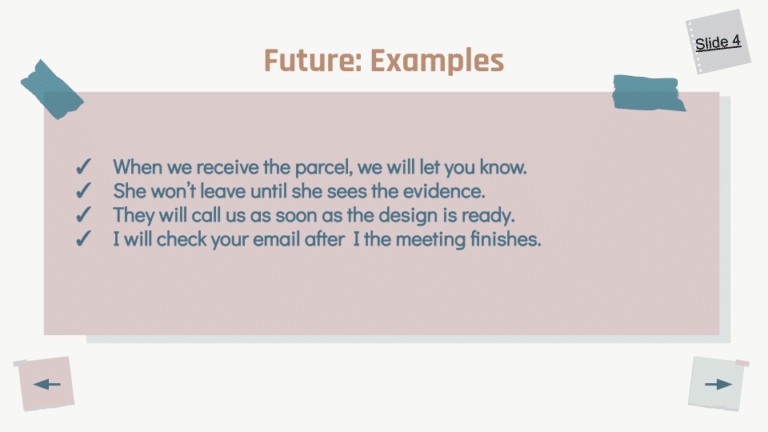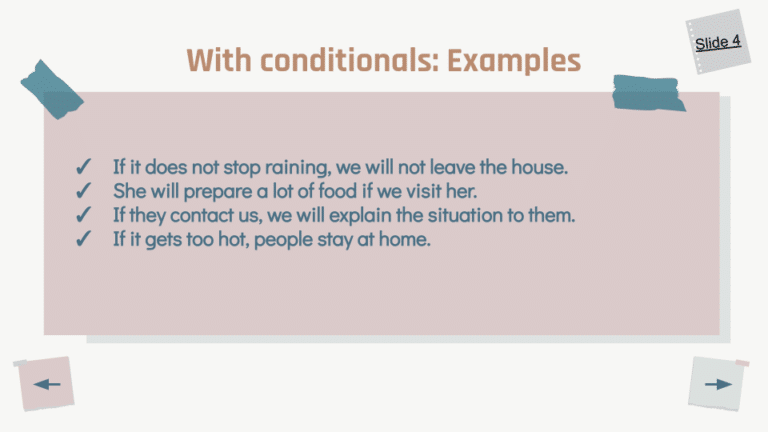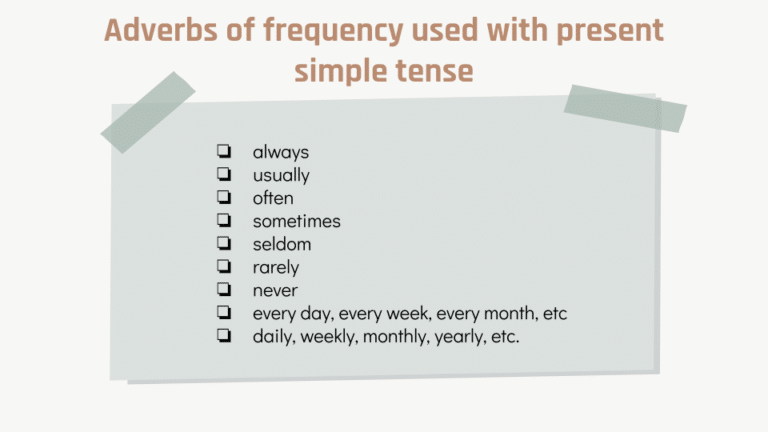Table of Contents
Introduction
Present simple verbs mainly describe something that was true in the past, is true in the present and will be true in the future. The present simple tense is frequently used in daily speech to describe regular and habitual actions and states.
- I wake up early in the morning. (= Waking up early in the morning is part of my daily routine.)
Forms
Affirmative sentences
The base verb is used without any additions when the subject is I, We (1st person singular and plural), You (2nd person singular and plural) or They (3rd person plural).
When the subject is She, He, or It (3rd person singular), an –s, –es or -ies is added to the main verb.
- Doctors help patients.
- I live in a small house.
- My sister spends her time drawing.
- We write a lot of emails every day.
- The teacher prepares exams for the students.
Spelling Note
When to add -s, -es, or -ies?
The general spelling rule is to add –s to the present simple verb when the the subject is a 3rd person singular.
- She eats pizza every day.
- He eats pizza every day.
- The cat drinks milk every day.
Exceptions to the rule:
1. Add –es after verbs that end with –s , –ch , –sh.
- miss – misses
- watch – watches
- finish – finishes
2. Remove the final –y and add –ies after verbs that end with consonant + y.
- carry – carries
- try – tries
- study – studies
3. Verbs that end with vowel + y follow the general rule of adding -s to the verb.
- play – plays
- stay – stays
- convey – conveys
3. These verbs do not follow any of the patterns above:
- do – does
- go – goes
- have – has
Negative sentences
To negate a sentence in the present simple, we use do not (or the short form don’t) when the subject is I, We, You or They followed by the base verb (verb 1).
I, We, You, They + do + not + base verb
With She, He and It, we use does not (or the short form doesn’t) followed by the base verb.
She, He, It + does + not + base verb
- I do not usually travel alone.
- We don’t discuss this issue very often.
- The sun doesn’t shine in my bedroom window.
- She does not usually ask people for help.
- My friends do not prefer to meet on weekends.
Questions
To make Yes/No questions in the present simple, we use Do and the main verb when the subject is I, We, You or They.
With she, he and it, we use does and the base verb.
For Wh-questions, we add the wh word before do or does.
(Wh) Do + subject (I, we, you, they) + base verb?
(Wh) Does + subject (he, she, it) + base verb?
- Do you frequently eat out?
- Do they know where they are going?
- Does she wash her hair every day?
- When does your physics class start?
- Why does your son cry a lot at night?
Uses
General statements of facts
Statements that are always true, such as scientific facts, are expressed in the present simple tense.
- Water boils at 100 degrees Celsius.
- Dogs eat meat.
- Living creatures need water to survive.
- Summer is hot in the desert.
Situations that are true for a long time
- I work in a factory.
- She lives in a nice apartment.
- He doesn’t like mango.
Routine actions and habits
- He doesn’t smoke.
- We walk for an hour every day.
- Do you play golf?
- I don’t write on social media very often.
Scheduled events
We use the present simple tense to talk about scheduled events like classes, flights, train and bus trips, etc.
- My class starts at 10:00 am.
- The train arrives in 30 minutes.
- What time does the bus leave?
- The film begins at 11:00 pm.
Future actions
- When we receive the parcel, we will let you know.
- She won’t leave until she sees the evidence.
- They will call us as soon as the design is ready.
- I will check your email after the meeting finishes.
With conditionals
Present simple verbs are used to make if clauses types 0 and 1.
- If it does not stop raining, we will not leave the house.
- She will prepare a lot of food if we visit her.
- If they contact us, we will explain the situation to them.
- If it gets too hot, people stay at home.
The verb be
When the main verb in a sentence is the verb be, it has 3 forms: am, is or are, depending on the subject. We use:
am with the first person singular I
is with the third person singular she, he and it
are with the first person plural we, the second person singular and plural you, and the third person plural they
- I am ready for the new step.
- My teacher is very kind and helpful.
- They are not keen to find a solution.
- I’m not very much excited about the plan.
- She isn’t my sister. She is my cousin.
- Are they tired?
- Is your boss a nice person?
- Why is this boy angry?
Adverbs of frequency
Adverbs of frequency can be used with simple present verbs when describing routine actions. This is a list of the most commonly-used adverbs of frequency.
- always
- usually
- often
- sometimes
- seldom
- rarely
- never
- every day, every week, every month, etc
- daily, weekly, monthly, yearly, etc.
For more details about adverbs of frequency, click here.
